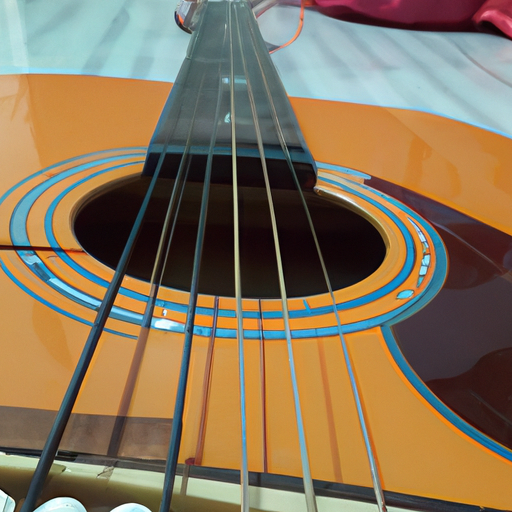
Guitar tablature and sheet music are two essential tools for any guitarist or musician. They provide a way to communicate musical ideas and compositions in a written form. While both guitar tablature and sheet music serve the same purpose, they differ in how they represent musical notes and information. Learning to read both can greatly enhance your musical skills and open up a world of possibilities.

Guitar tablature, also known as "tab," is a simplified form of musical notation specifically designed for guitarists. It uses numbers, letters, and symbols to represent the strings and frets on the guitar. Each number indicates which fret to press down on a specific string, allowing you to play melodies, chords, and solos.

Reading guitar tablature is relatively easy and doesn't require any prior knowledge of music theory. It provides a visual representation of the guitar neck, making it easier to understand where to place your fingers to produce specific sounds. It's a popular choice for beginners and guitarists who want to learn songs quickly.
Some symbols commonly used in guitar tablature include:
Sheet music, on the other hand, is a more traditional form of musical notation that represents music in a standardized way. It uses notes, clefs, and other symbols to convey pitch, rhythm, and dynamics. Sheet music is used not only for guitar but also for a wide range of instruments and vocal performances.
Learning to read sheet music requires some knowledge of music theory, such as understanding note values, key signatures, and time signatures. It provides a comprehensive representation of a musical piece, including melody, harmony, rhythm, and other musical elements.
Some symbols commonly used in sheet music include:
Guitar tablature and sheet music have their own advantages and disadvantages. Understanding the differences between the two can help you decide which one to use in different situations.
Guitar tablature is more accessible for beginners and those who want to learn songs quickly. It provides a straightforward visual representation of the guitar neck, making it easier to play melodies, chords, and solos. However, it lacks the comprehensive information that sheet music offers, such as rhythm, dynamics, and other musical elements.
Sheet music, on the other hand, provides a more detailed representation of a musical piece. It allows you to understand the music's structure, rhythm, and harmony, making it suitable for more advanced musicians and those who want to explore music in a deeper way. However, learning to read sheet music requires more time and effort compared to guitar tablature.
While guitar tablature and sheet music have their individual uses, learning to read both can bring numerous benefits to your musical journey.
By learning guitar tablature, you can quickly learn how to play your favorite songs and riffs. It enables you to replicate the sounds you hear accurately, making it a valuable tool for playing by ear. Moreover, it helps you develop finger dexterity and coordination, essential skills for any guitarist.
On the other hand, learning sheet music allows you to explore a wider range of musical genres and styles. It provides a deeper understanding of music theory, enabling you to compose, arrange, and improvise more effectively. It also opens up opportunities for collaboration with other musicians and playing in different musical ensembles.
Reading guitar tablature and sheet music can be challenging, especially for beginners. Here are some tips to help you read them more effectively:
Practicing specific exercises can help you improve your reading skills and fluency in guitar tablature and sheet music. Here are some exercises you can try:
When learning to read guitar tablature and sheet music, beginners often make some common mistakes. Being aware of these mistakes can help you avoid them:
Various resources are available to help beginners learn how to read guitar tablature and sheet music. Here are some recommendations:
Learning how to read guitar tablature and sheet music is a valuable skill for any guitarist or musician. While guitar tablature offers a quick and accessible way to learn songs, sheet music provides a deeper understanding of music theory and a broader range of musical possibilities.
By learning to read both guitar tablature and sheet music, you can enhance your musical skills, explore different genres, and collaborate with other musicians. Practice regularly, seek guidance when needed, and enjoy the journey of becoming a proficient reader of guitar tablature and sheet music.
Guide to reading guitar tablature and sheet music